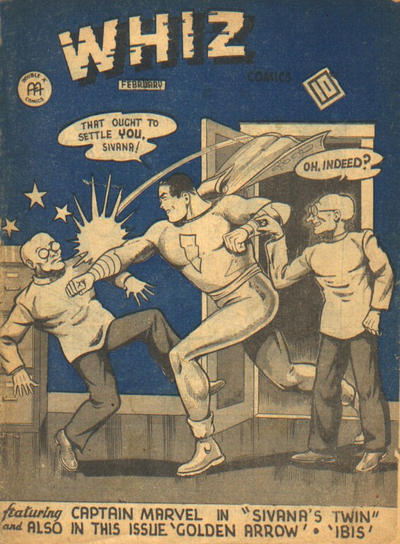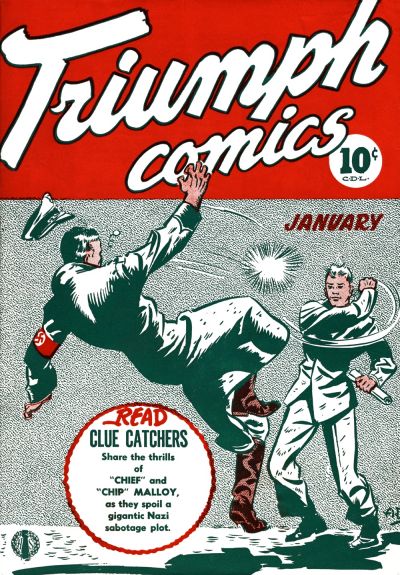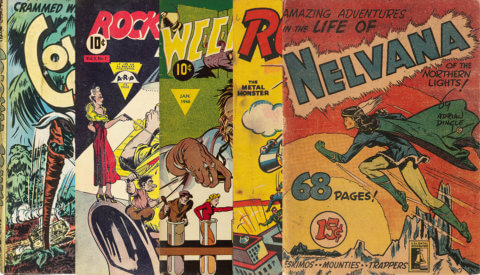The sense of ‘pulling together for the greater good’, as we in Canada are doing now under the jackboot occupation of this pandemic, would have had a sympathetic resonance with the Canadians of the Second World War homefront eight decades ago.
At that time, we were a nation doing its best to push back against an external enemy and this affected and created a new-normal daily life in our country for a period of six years. Admittedly, our present tribulation shouldn’t be anywhere nearly as long, but the tone of a human and national struggle against a common foe–that could very well do us in–is not that different. While the threat of that time had a face that we could vilify, pillory, and caricaturize, the microbial, spikey ball haunting us today is given its public incarnation through statistics and graphs and through the panorama of human consequence that stretches across our media screens during our waking hours. The front lines in the early forties were the European and Pacific theatres, today they are drawn up in our hospitals and ICUs. During the war, we, on the home front, pulled together against the Axis by drawing together in rallies, staging scrap and paper drives, and by organizing all sorts of social events to raise funds to buy war bonds. Today, we at home fight by repelling each other with two-metre magnetic shields and the forced cocooning of stay-at-home isolation.
Given the context of this great new ‘super-villain’ in our lives (and the front-line health care workers have stepped out of phone booths with their super-hero emblems blazing), I wanted to talk a little about a far more trivial topic–the representation of villains in our Canadian comics of the Second World War.
It’s strange that none of the hero story lines in the Canadian war-time comics produced a recurring arch-villain. No counterpart of The Joker, Luthor, Red Skull or Doctor Doom ever stepped out of those black-and-white pages. The great enemy was The Axis, and perhaps that was enough. True there were a set of minor transplants from Fawcett (Sivana, Captain Nazi, and Mr. Mind) in the Anglo-American redraws, but we never produced an appropriate archfoe for Johnny Canuck—we had to rely on Hitler. Perhaps there wasn’t enough evil in our country to match the evil abroad….
I think we started to come close towards the very end of the time of these first Canadian comics when Adrian Dingle brought back Vultor from Glacia to battle Nelvana (F. E. Howard’s Super Duper Comics No. 3 May-June 1947) and especially when Tedd Steele conjured up The Mole to fight Speed Savage as the White Mask in the three-story arc of Triumph Comics Nos. 27-29. However, the most prominent menace in the first five years (1941-45) of Canadian comics was the three-headed, fire-breathing dragon of The Axis bearing the faces of Hitler, Tojo, and Mussolini.
For the first year (1941), Canadian comics seemed to shy away from cartoon political statements altogether, leaving them to the editorial pages of newspapers. True, a comic book-like collection of editorial strips by former soldier, Harry Hall, titled Mean Scamp-F appeared in that year featuring caricatures of the German and Italian despots (Japan had not yet entered the war), but it certainly wasn’t a comic book. During that year, depictions of the enemy were relegated to the odd sentry that was roughed up or dispatched by a protagonist.


It seems that the first appearance of Hitler in those early Canadian comics was in the penultimate panel of the first-ever Johnny Canuck story in the first issue of Dime Comics (February 1942) where he places a bounty on our hero’s head. Johnny punches him in the nose in the next issue. Il Duce also has a couple of appearances during this pre-Dingle time at Bell Features.




Now, Hitler’s first cover appearance on one of these Canadian war-time comics seems to be on Dingle’s first issue for Bell Features, Triumph Comics No. 7 (c. May 1942). Here The Fuhrer is about to be crushed by the iron thighs of Nelvana looking to have done a WWE leap off the corner ropes. What a way to go!

The strange thing is that this is the only Bell Features cover on which Hitler, or any of the Axis leaders, appears. In fact, none of them appear on any Educational Projects (Canadian Heroes Comics) issues out of Montreal, and I can only come up with one cover appearance from the Vancouver publisher, Maple Leaf Publications, and that is Better Comics Vol. 3 No. 1 (Dec.-Jan. 1943-4) where the spooky 1944 New Year’s baby has Hitler and Tojo secured in a duffel bag and ready for prosecution.

The main culprit seems to be Anglo-American Publications where I count three, possibly four, Axis leader covers. The earliest of these is Three Aces Comics Vol. 1 No. 9 from October 1942. It depicts Les Gilpin’s comic “superhero” character Sooper-Dooper roughing up two-out-of-three of the heads of the Axis dragon.

A month later, Anglo put out Whiz Comics Vol. 1 No. 11 (November 1942) and here it’s another comic representation with The Big Red Cheese confronting a troll Mussolini and troll Hitler.
A couple of years later Anglo put out Grand Slam Comics Vol. 4 No. 1 (December 1944) showing a proper Canadian superhero, Commander Steel, giving gut punches to Tojo and Adolph.

The one I’m not sure about and is probably the best of the lot is Grand Slam Comics Vol. 2 No. 5 from April 1943. This clearly isn’t Tojo, but it’s probably a good representation of the way Canadian propaganda hyperbolically demonized the Japanese, sometimes turning a corner down a dark alley that they don’t seem to do with representing European members of the Axis.

After the war, the governments and the public in Canada pretty much rebuilt normal and we headed into the Cold War. I don’t think it’ll be as easy a transition into the new normal around the corner this time. I wonder to what extent it’ll impact our trivial little comic book hobby moving forward?
NEWS
We have formed a small team to plan our celebration of the 80th anniversary of the first Canadian floppy (Better Comics Vol. 1 No. 1 March 1941) next year (2021). The team is headed by Brendan Montgomery of Sequential Magazine and we hope to be able to execute a number of manageable events that will bring attention to the fact that 2021 will be the 80th year of Canadian comics. I have heard the 80th anniversary of anything called the “oak anniversary” and the second “diamond anniversary”, but I think we should call it the Red Maple Anniversary and revel in the fact that Canada has such a rich eight-decade legacy of this popular art form.















Another great article, Ivan.
World War 2 motivated comics creators and fans against a common enemy so powerful and evil, that supervillains couldn’t compete. It drove comic sales into the millions. The stories were believable because no hero was completely omnificent and could suffer defeat, making victory against the axis an ongoing struggle, reflecting the reality of war.
Comics nowadays wouldn’t be as successful as there too many omnificent superheroes who couldn’t be defeated by mortal villains like the axis. That would strain believability as fans would question why these planet movers were helpless to stop a mortal enemy such as the axis.
I was wondering; among all the known collections of WECA books, could a complete collection be assembled or are there still some books which haven’t turned up anywhere, as of yet?
Thanks, Tony. You make a great point. What is the Axis when we compare it to Galactus, Thanos, and Darkseid.
As to the extent of WECA comics, I think that I’ll be able to find over 95% of them for my Gerber-like Photo-Journal of WECA comics project. I’ve been able to get scans of about 50% of the 780 comics that we know were produced in Canada during the war and now have these print-quality cover pics filed away. I’ve been able to do this without really tapping into any of the big collections. I don’t think that there is a single issue listed in the WECA Comic Book Price Guide that has not turned up. The very first Anglo-American comic, Robin Hood Comics Vol. 1 No. 1 was one that I thought might never turn up but Walt was able to snag a copy that turned up on a CLINK auction a couple of years ago.
Great article Ivan! I am wondering if there had been villains like The Red Skull or Crimebuster’s nemesis Iron Jaw to pop up on a semi regular basis we might have seen more of a spill over of those great Canadian hero’s! It doesn’t hurt to have another set of regimes like the axis to play off of. Its probably why Marvel had so many communist enemies in the 60’s. Eventually as our attitudes toward war changed we needed to make our villains as colorful as possible luke Spiderman or the Flashes rogues galleries! Always happy to be enlightened on the creations of my Canadian neighbor!
Thanks for your kind comments, Gerald. Let’s hope that collecting these Canadian books catches on a little bit more in your side of the border. You guys are being hit hard by our current enemy. Hope you and your family are all well and safe.
5
Hey Ivan
Another gem in your ongoing chronicle of the great Canadian comic books! And, speaking of gems, the 80th anniversary is traditionally celebrated with a ruby, making next year the Ruby Jubilee of WECA books.
I hope the major collectors step up with scans for your photo journal book project. I won’t name names, because it inevitably lands me in hot water, but there are some significant collectors out there who have not yet stepped up to the plate to lend a hand in this project, and I hope they get off their duffs to do the right thing for the Ruby Jubilee.
I’m sure a facsimile edition of Better Comics #1 is a doable tribute to the birth of our Golden Age history, and I’m also sure I can recommend the guy for the job, since he has been chomping at the bit ever since you and I mentioned it to him last year.
I wish you all the best in all of these undertakings, and am ready, willing and able to jump in and help wherever I can. Here’s wishing you and all our WECA allies a happy and prosperous Ruby Jubilee!!!
cheers, mel
Great to hear from you, Mel! I like the term “Ruby Jubilee.” It sounds simultaneously elegant and kitschy which suits comic books to a “T.” Everybody I’ve contacted, who has a sizeable collection of Canadian war-time comics, has been eager to help without any hesitation including anybody you can think of, Mel. Just waiting for the air to clear and then I can tap these wonderful and gracious resources.
Hey Ivan
Glad to hear the big collectors are stepping up to the plate. You’ve taken on a noble undertaking here and it’s good to have everybody on board. I also don’t think you’ll have any trouble getting Better Comics #1 reprinted either. This should be a great Ruby Jubilee and a great year for all collectors of WECA books. All involved should take pride in keeping these books in the collective memory for some time to come.
cheers, mel